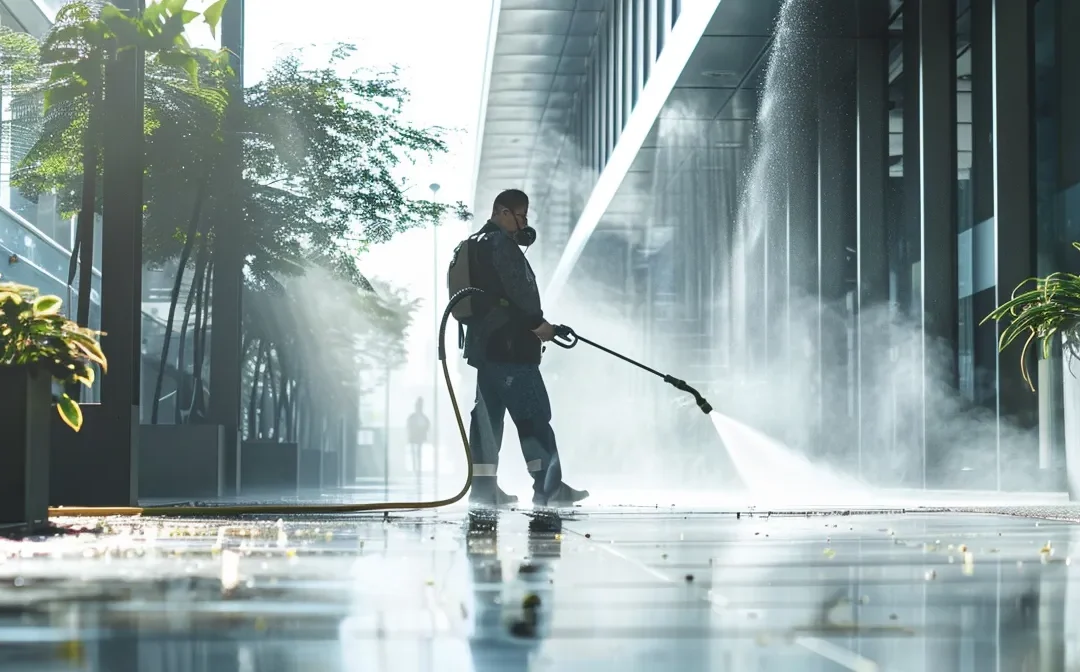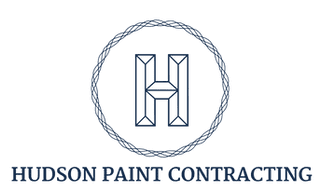Essential Safety Habits for Power Washing Experts
Power washing can be a challenging task, especially when it comes to safety. Many professionals overlook essential safety habits, leading to accidents that could have been prevented. This article will outline crucial practices such as understanding pressure washing equipment, using proper safety gear, and assessing the environment for risks. By following these guidelines, power washing experts can enhance their safety measures, minimize injuries, and improve overall job efficiency. Engaging with this content will equip readers with the knowledge needed to address common safety concerns in the field effectively.
Essential Key Takeaways for Safe and Efficient Power Washing
- Proper equipment knowledge enhances safety and equipment longevity for power washing professionals
- Using the correct nozzle and pressure settings prevents damage and costly mistakes
- Regular maintenance and safety gear significantly reduce the risk of injuries during power washing tasks
- Assessing the environment ensures safer operations and effective cleaning outcomes
- Following depressurization procedures protects against accidental spraying and harmful exposure
Understand Your Pressure Washing Equipment
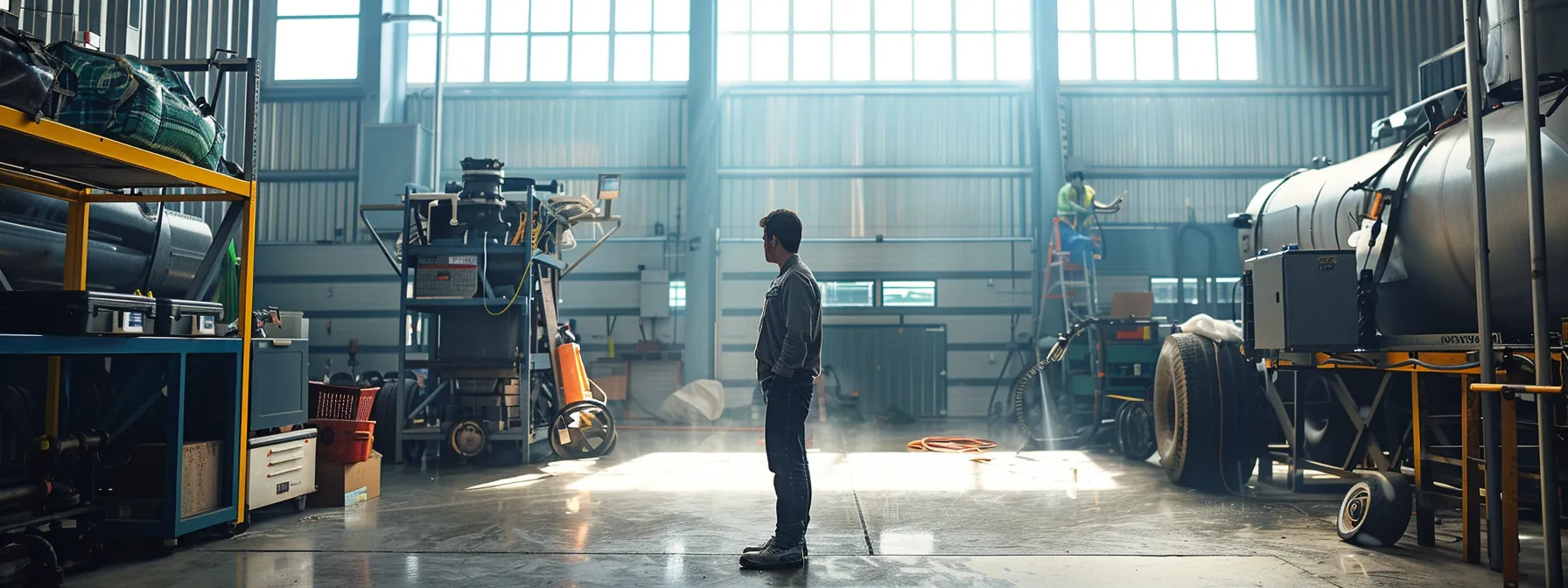
Power washing experts must thoroughly understand their equipment, including the engine, to operate safely and efficiently. Familiarity with each component can prevent potential injuries and ensure the longevity of the device. Proper operation not only enhances performance but also contributes to effective home improvement projects, such as furniture refinishing.
Knowledge of the pressure levels and the appropriate nozzles for specific tasks is crucial for avoiding damage to the vehicle or the surface being cleaned. Different projects require different settings, and novice operators may overlook this, leading to costly mistakes. Understanding this equipment helps to optimize safety measures and equipment lifespan.
Regular maintenance plays a significant role in the longevity of pressure washing devices. Routine engine check-ups, including oil changes and parts inspections, minimize risks of malfunction that could cause injuries. Well-maintained equipment allows operators to focus on their work without concerns for safety.
| Equipment Component | Safety Importance | Maintenance Tips |
|---|---|---|
| Engine | Prevents injury by ensuring proper function | Regular oil changes and inspections |
| Nozzles | Prevents damage to vehicles and surfaces | Select the correct nozzle for the task |
| Pressure Levels | Avoids damage and injuries | Adjust based on the type of project |
Knowing your pressure washing equipment is only part of the task. Now, prepare yourself with the right safety gear; it’s the shield between you and the job’s dangers.
Equip Yourself With Proper Safety Gear
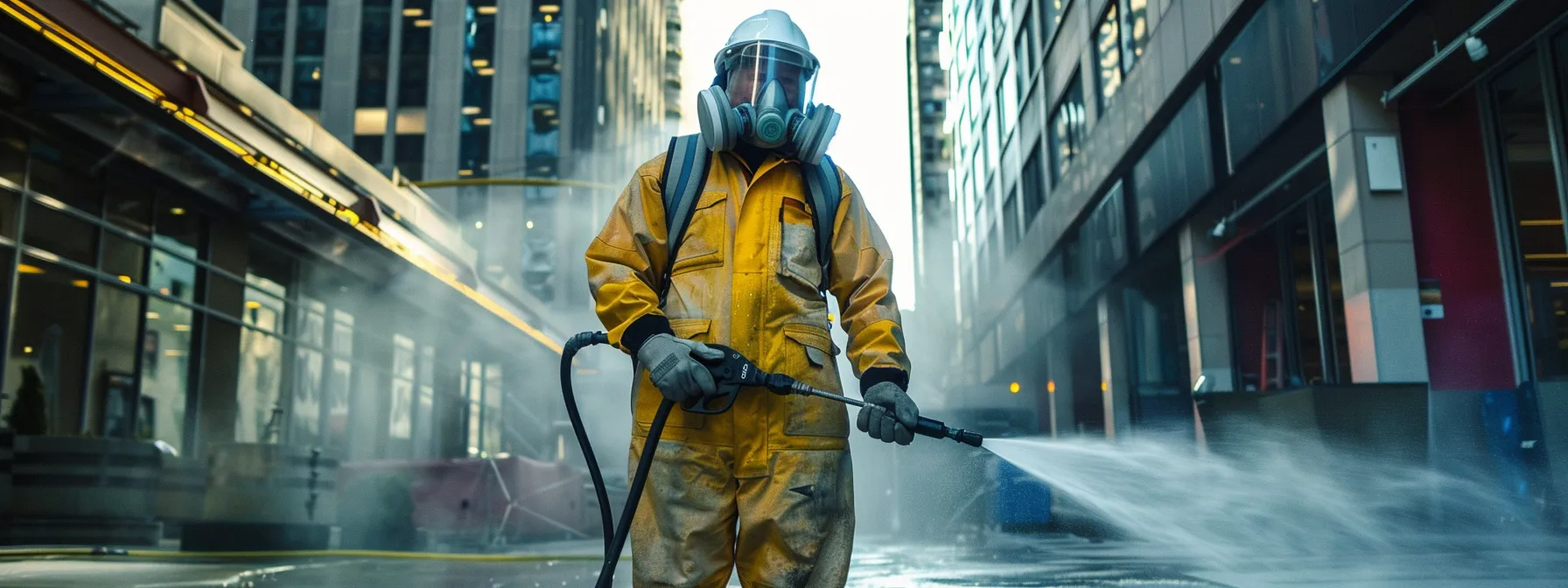
Power washing experts should prioritize safety by equipping themselves with appropriate protective gear. This gear, which is vital for preventing injuries caused by high-pressure water jets, includes safety goggles, gloves, and non-slip footwear. Using this equipment minimizes the risk of hazards associated with mold, dirt, and chemicals often encountered during cleaning tasks.
In the context of occupational safety and health, the right safety gear can significantly reduce the risk of injury. Experts should invest in heavy-duty gloves that protect against the chemicals used for mold removal and ensure proper eye protection to guard against debris. These essentials create a safer work environment, allowing professionals to focus on their tasks without concerns about sustaining injuries.
Additionally, using respiratory protection is crucial when dealing with hazardous substances prevalent in outdoor cleaning projects. Masks help experts avoid inhaling harmful particles and fumes released during the power washing process. Implementing these essential safety practices leads to a healthier, safer workplace:
| Safety Gear | Purpose | Benefits |
|---|---|---|
| Safety Goggles | Protects eyes from debris | Reduces injury risk |
| Heavy-duty Gloves | Protects hands from chemicals | Prevents skin irritation |
| Non-slip Footwear | Provides traction | Minimizes slip hazards |
| Respiratory Masks | Prevents inhalation of harmful particles | Promotes health safety |
With safety gear in place, the task ahead feels more manageable. Next, look around; the space holds hidden dangers that must be understood before proceeding.
Assess the Surrounding Environment for Risks
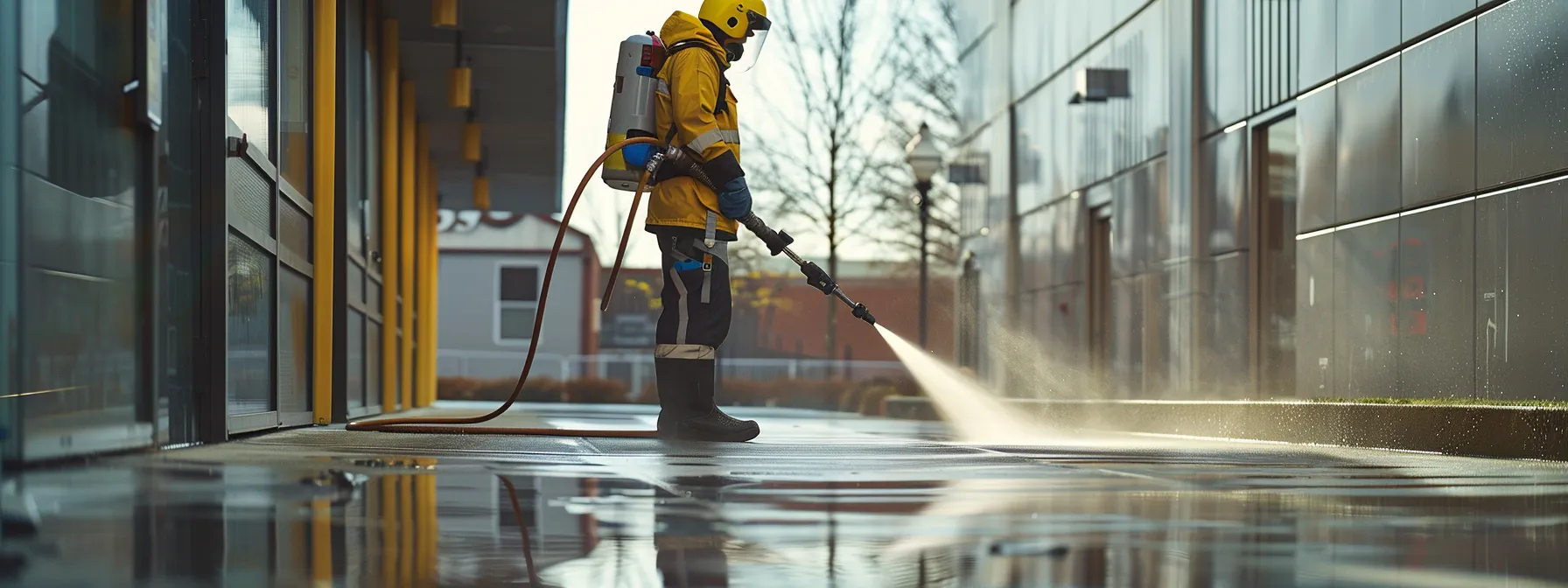
Power washing experts need to give careful attention to their surroundings before starting any cleaning project. An effective assessment involves checking for potential contamination, such as oil spills or mold, that may complicate the cleaning process. Identifying these risks early helps in planning appropriate responses, ensuring safety and efficiency.
Understanding the surface material is crucial as well. For instance, cleaning concrete requires specific techniques to avoid damage. Experts must also evaluate the presence of nearby structures, plants, and vehicles that could be impacted by the spray, ensuring a meticulous approach to prevent unwanted harm.
Furthermore, professionals should stay vigilant about weather conditions and any hazards in the area. Wet or slippery surfaces can increase the risk of slipping, so wearing suitable safety gear remains essential during operation. A thorough environmental check will contribute substantially to maintaining a safe working environment:
| Assessment Factor | Risk | Recommended Action |
|---|---|---|
| Surface Material | Potential damage | Choose appropriate technique |
| Presence of Contaminants | Complicated cleaning | Identify and manage risks |
| Weather Conditions | Increased slip hazards | Wear appropriate safety gear |
Danger lurks in unseen places. A breath of fresh air is essential when using gas-powered units; it keeps the work safe and clear.
Operate Gas-Powered Units Only in Well-Ventilated Areas
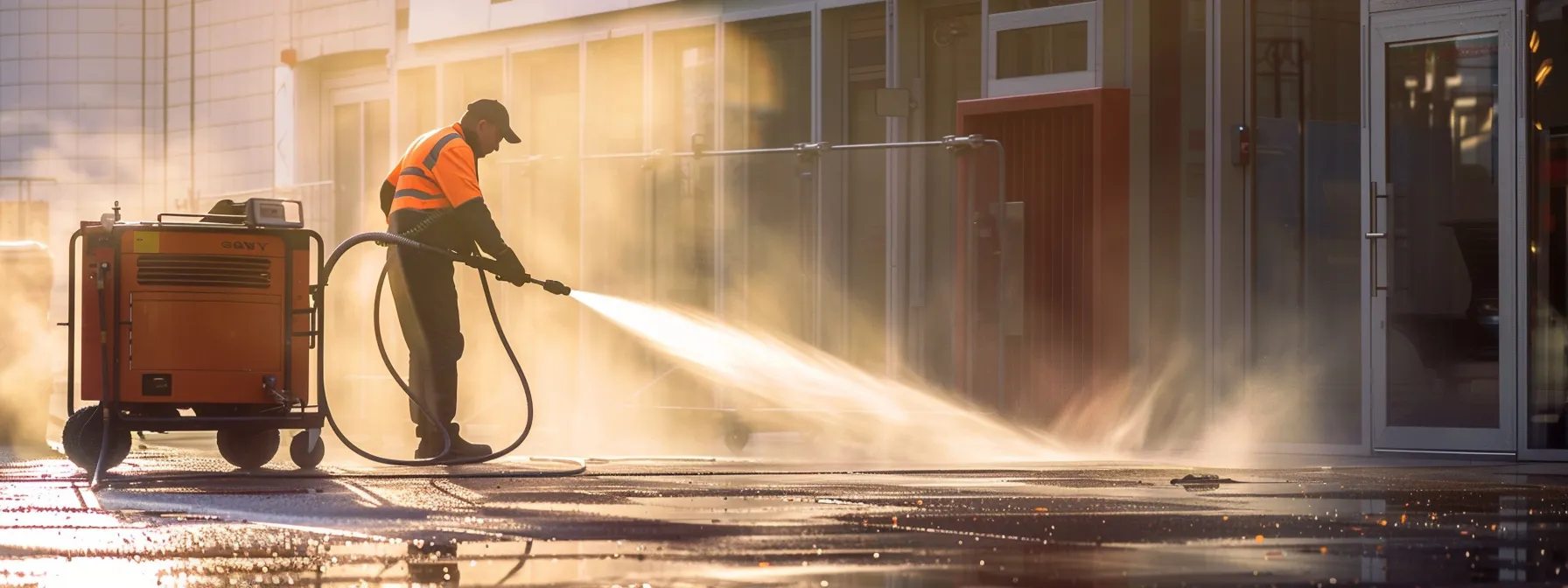
Power washing professionals must operate gas-powered units in well-ventilated areas to minimize exposure to harmful fumes and dust. Adequate airflow helps dissipate the toxic gases produced during operation, ensuring a safer environment for workers. This practice is particularly important when using soap solutions and handling high-pressure hoses, as it reduces the risk of respiratory issues.
When working on surfaces such as pavers, gas-powered units should always be positioned away from enclosed spaces. This precaution prevents the accumulation of exhaust fumes, which can pose health hazards. Additionally, an open environment allows for better visibility, making it easier to spot any risks associated with the equipment and surrounding area.
Maintaining proper ventilation is crucial even during routine tasks, such as refilling fuel or cleaning the equipment. A gallon of gas should be handled away from direct sources of ignition and in areas where the fumes can easily disperse. By following these practices, power washing experts can protect their health while efficiently performing their cleaning tasks.
When the air is clear and safe, the real work begins. Choosing the right nozzle size for the task at hand can make all the difference in achieving your desired result.
Select Appropriate Nozzle Sizes for Specific Tasks

Choosing the right nozzle size is critical for effective cleaning, especially when working on various surfaces like roofs. Nozzles with narrower spray patterns offer higher pressure suitable for tough stains, while wider nozzles are better for delicate surfaces that require an environmentally friendly approach to maintain integrity.
In a humid subtropical climate, operators must be careful when using pressure washers on sensitive materials. Utilizing the correct nozzle size minimizes the risk of damage while ensuring that mold and mildew are effectively removed, contributing to safer and cleaner environments.
Safety also depends on understanding the cleaning needs of each project. The right nozzle size enhances performance and ensures that the job is done efficiently without causing unintended harm:
- Narrow nozzles for high-pressure tasks on roofs.
- Wider nozzles for safe cleaning of sensitive surfaces.
- Consideration of environmental impact and effectiveness in humid climates.
Choosing the right nozzle is just the beginning. Understanding how far to keep it from the surface will ensure the job is done safely and effectively.
Maintain Recommended Distances During Operation
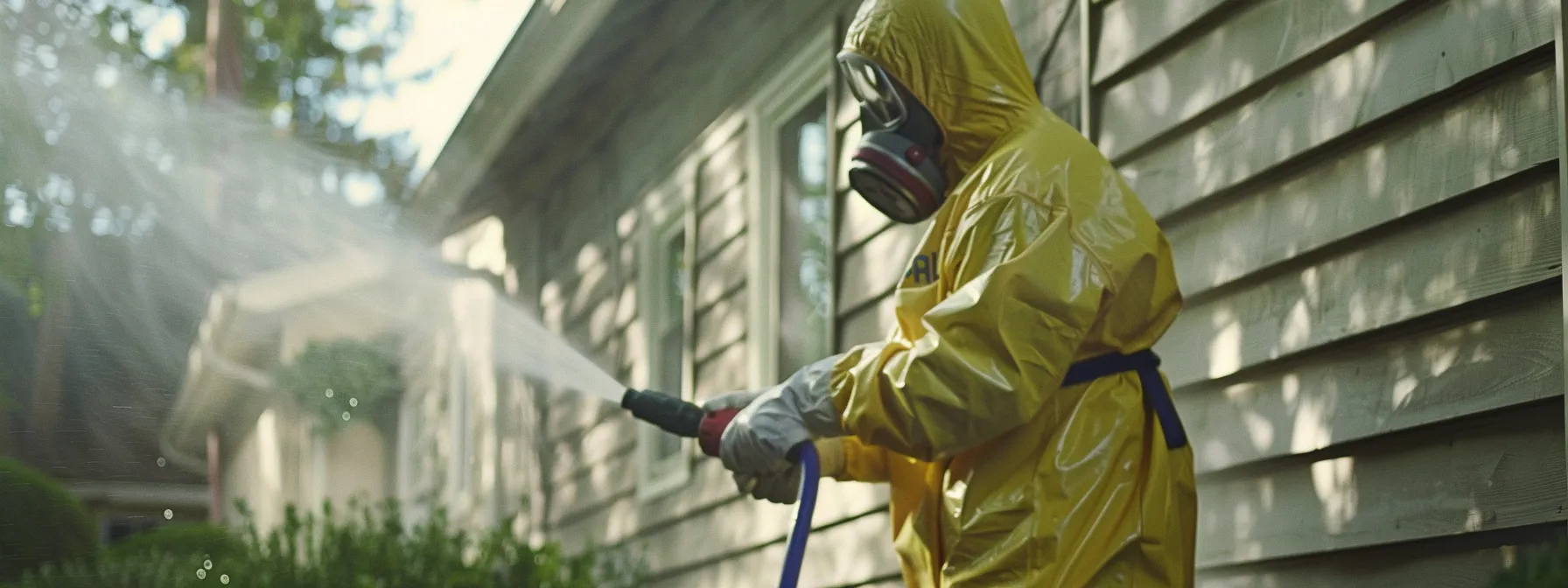
Maintaining recommended distances during power washing tasks is crucial for safety and effectiveness. Operators should keep a safe range from surfaces like vinyl siding to prevent damage while managing high pressure, which can reach thousands of pounds per square inch. This distance helps minimize risks associated with debris that may be dislodged during cleaning.
When addressing issues such as mildew, the correct distance ensures the cleaning solution adequately penetrates without harming the underlying material. Professionals should avoid getting too close, as doing so can lead to uneven cleaning results and potential surface abrasion. Adhering to distances also aids in protecting personal gear from chemical splashes and debris.
Establishing a safe working perimeter supports optimal equipment performance while promoting a secure work environment. This practice encourages efficient dust and debris management, ultimately contributing to a more thorough and effective clean:
- Maintain distance to protect vinyl siding and other surfaces.
- Control pressure to avoid damaging materials affected by mildew.
- Ensure safety gear remains intact during operations.
As you manage your distance, consider the water’s force. Keeping your body clear of the stream is essential for complete safety.
Keep Your Body Clear of the Water Stream
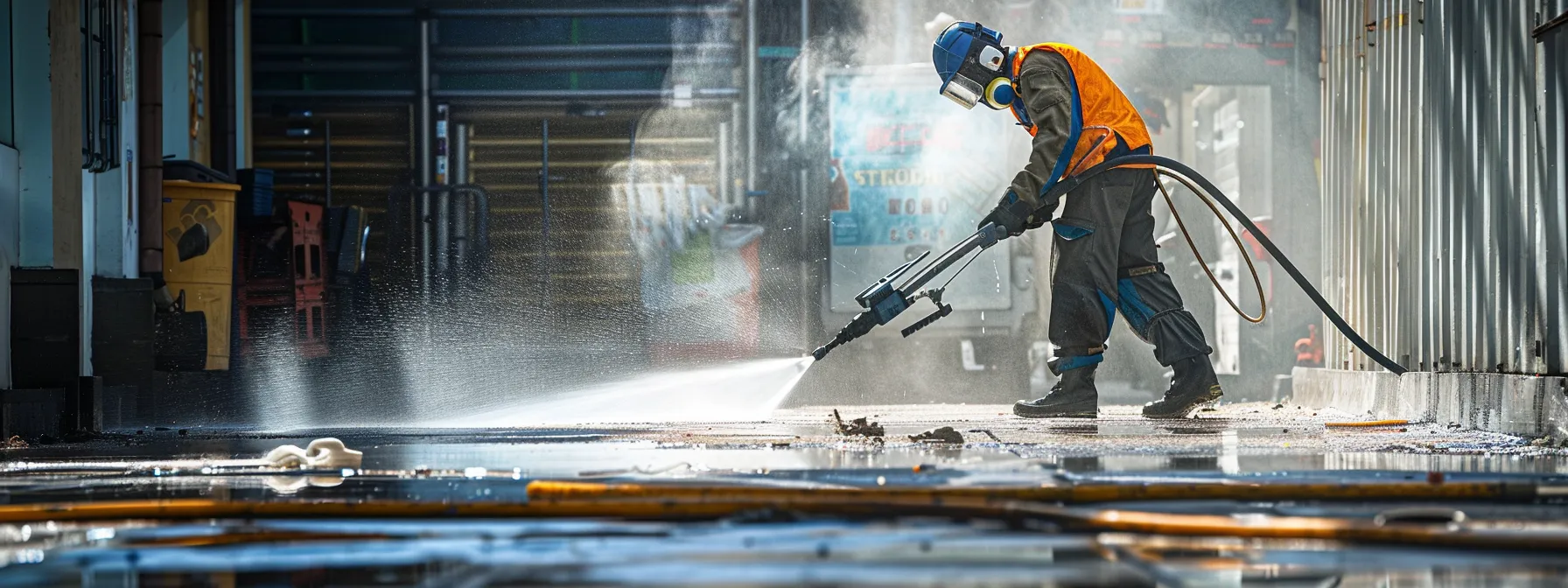
Power washing experts must prioritize their safety by maintaining a safe distance from the water stream generated by the machine. High-pressure water can cause serious injuries, making it essential to keep the body clear of the cleaning area while operating the equipment. Professionals should understand the power of the water stream and avoid positioning themselves within its trajectory, ensuring compliance with best practices governed by the Occupational Safety and Health Administration.
In scenarios where algae or other stubborn debris require removal, operators should utilize an extension cord to keep power sources out of the direct cleaning area. This practice helps prevent accidental contact with water while also maintaining the functionality of equipment, which is critical for a successful job. Understanding the layout and keeping a clear workspace enhances safety and efficiency during the refinishing by hudson process.
Awareness of the cleaning environment and potential hazards allows power washing professionals to operate safely and effectively. Any distraction or miscalculation can lead to injuries, especially in high-pressure operations. Being mindful of body positioning not only protects the individual but also promotes a safer working atmosphere for everyone involved in the cleaning project.
Water can sweep you off your feet if you’re not careful. To hold your ground, keep both feet firmly planted where you stand.
Ensure Stability by Keeping Both Feet on Solid Ground
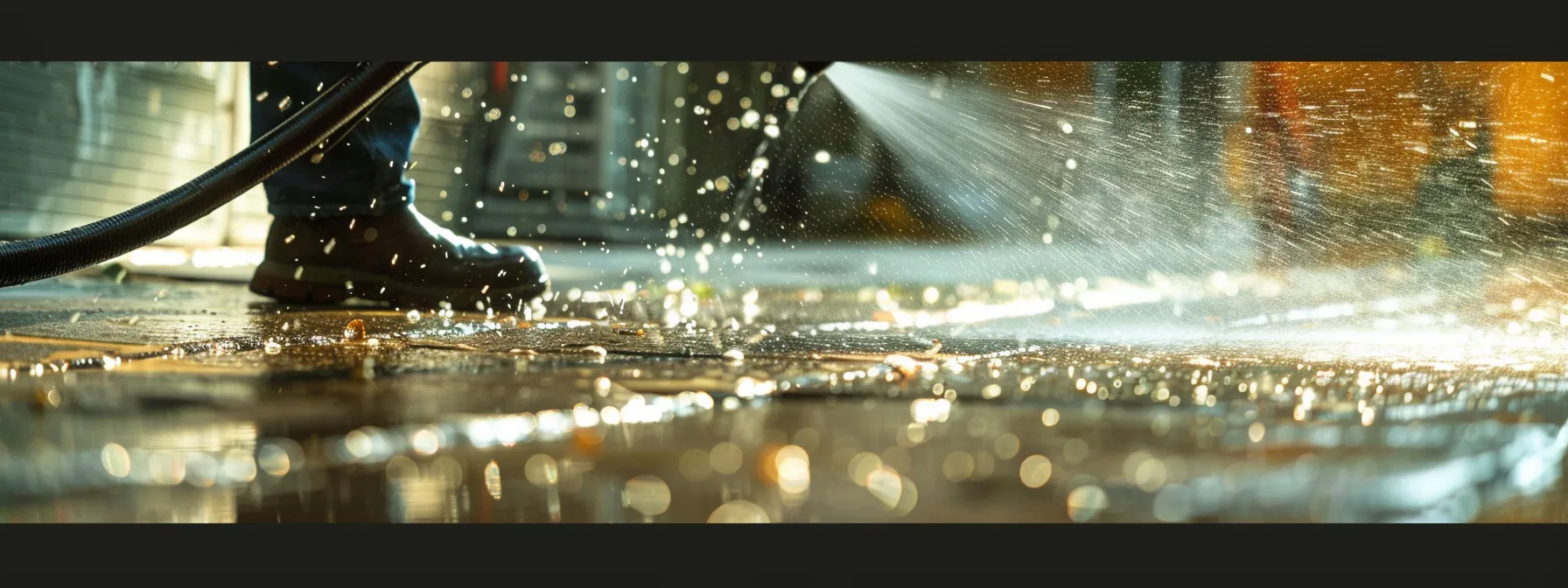
Power washing professionals must ensure their stability by keeping both feet on solid ground. This practice helps prevent unnecessary falls and potential injuries while using high-pressure equipment, especially on surfaces such as driveways and patios. Stability is key when operating equipment that generates significant pressure, as it allows for better control and accuracy during cleaning tasks.
When power washing services are performed on uneven or slippery surfaces, maintaining a solid footing is essential. By focusing on their stance, operators can avoid excessive movement that could lead to accidents or wounds from misplaced nozzles or equipment. Stability directly impacts the quality of work, as safer operators can concentrate on achieving thorough and effective cleaning results.
In any power washing project, such as cleaning a driveway or patio, professionals should be mindful of their body positioning. Keeping both feet grounded enhances balance while managing the powerful spray from the washer. Practicing this habit ensures not only personal safety but also contributes to a more efficient operational workflow:
- Focus on maintaining solid footing.
- Be aware of the surface conditions to avoid slips.
- Keep body positioning stable during operations.
With a firm stance secured, the next step is to engage your safety mechanisms correctly. These tools stand ready, ensuring every action is backed by the right protection.
Engage Safety Mechanisms Properly
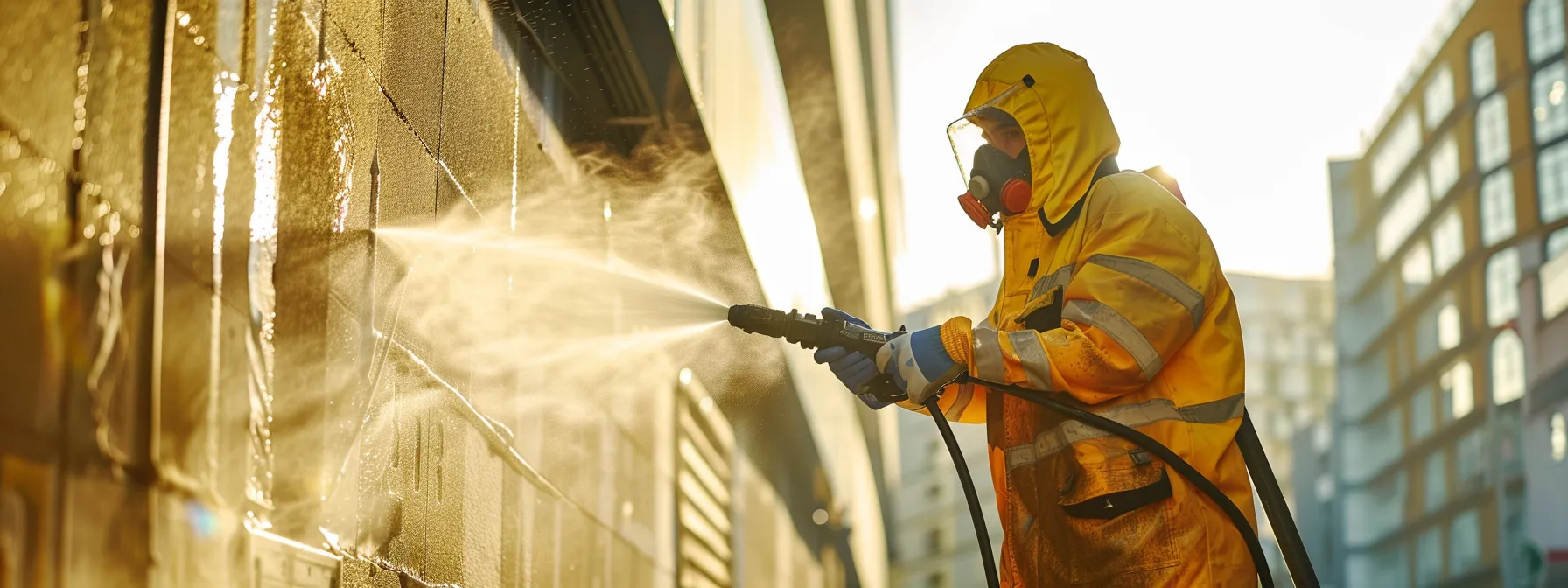
Power washing professionals must engage safety mechanisms effectively to minimize risks associated with high-pressure washing. This includes utilizing personal protective equipment, such as gloves and goggles, to safeguard against debris and chemical exposure. Proper engagement of these mechanisms ensures that experts remain safe while addressing challenging tasks like removing soil and grime.
Additionally, power washing units often come equipped with built-in safety features that help control heat and pressure levels. Understanding how to engage these features allows professionals to work efficiently while reducing the likelihood of accidents. hudson paint contracting emphasizes the importance of a thorough understanding of equipment safety mechanisms as a core practice during pressure washing projects.
Regular training on safety protocols and equipment usage is essential for power washing experts. By continuously reinforcing the importance of safety mechanisms, teams can enhance their operational effectiveness. Maintaining this focus contributes to successful outcomes for projects without compromising safety standards:
| Safety Mechanism | Function | Importance |
|---|---|---|
| Personal Protective Equipment | Protects the operator from hazards | Prevents injuries and exposure to harmful substances |
| Built-in Safety Features | Controls heat and pressure levels | Enhances operational safety and efficiency |
| Regular Training | Reinforces safety protocols | Improves knowledge and practice of safety measures |
After engaging the safety mechanisms, attention shifts to another vital step. Properly depressurizing ensures equipment longevity and user safety, making it essential for every operator.
Follow Proper Depressurization Procedures After Use
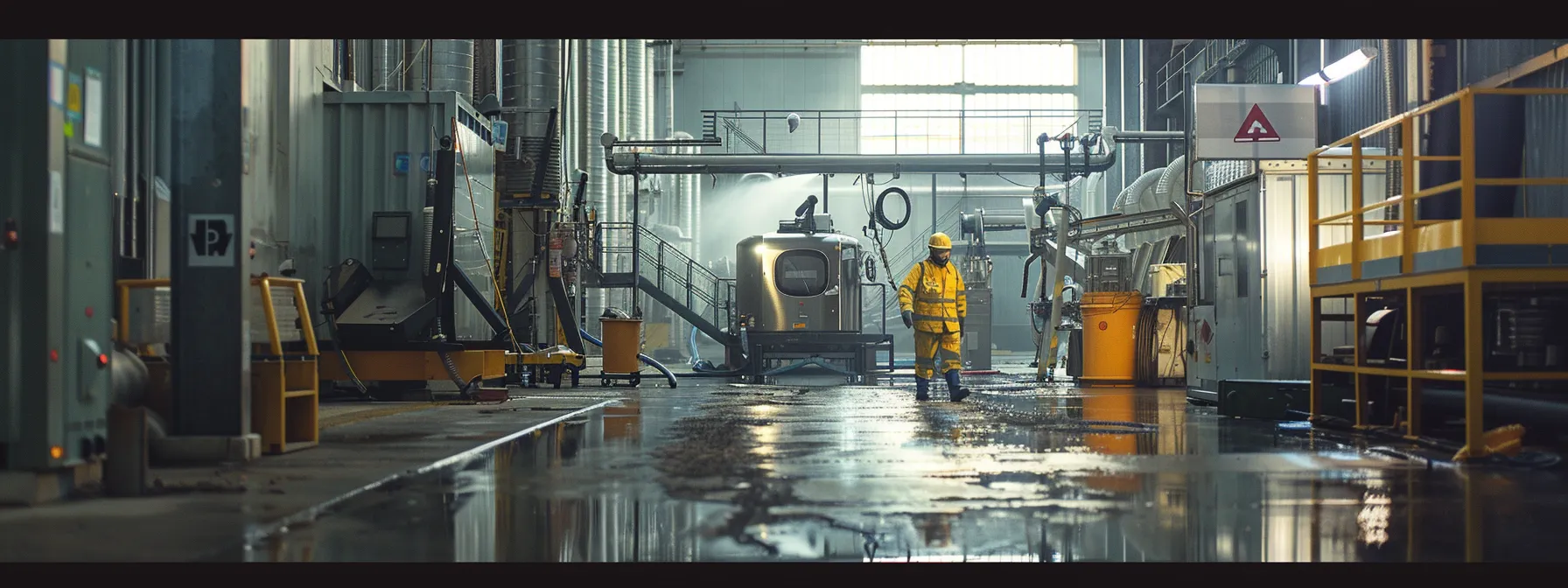
After completing a power washing project, following proper depressurization procedures is essential to ensure safety. This step helps prevent any residual pressure in the hoses, which can lead to unexpected spraying once the equipment is turned off. Experts should remember to release any remaining water carefully, especially when cleaning areas such as sidewalks, where slipping hazards might occur.
Additionally, ensuring that all equipment is properly handled reduces the risk of exposure to harmful substances. In particular, operators should avoid any potential carbon monoxide buildup when using gas-powered units indoors. Implementing these safety measures contributes significantly to a safe workspace, protecting individuals from injuries and ensuring equipment remains functional.
Prioritizing eye protection during the depressurization process is also crucial. Residual oil or debris may be ejected during the release, posing a risk to the eyes if safety goggles are not worn. This practice, along with handling wood surfaces carefully post-cleaning, reinforces the importance of structured safety habits for power washing professionals.
Conclusion
Power washing experts must prioritize essential safety habits to ensure a secure working environment and effective project outcomes. Understanding equipment, wearing appropriate protective gear, and assessing surroundings significantly reduce the risks of injuries and damage during operations. Maintaining proper distances, staying stable, and engaging safety mechanisms further enhances safety protocols. Adopting these practices not only safeguards operators but also boosts the quality of cleaning services provided to clients, emphasizing the critical nature of safety in the power washing industry.
